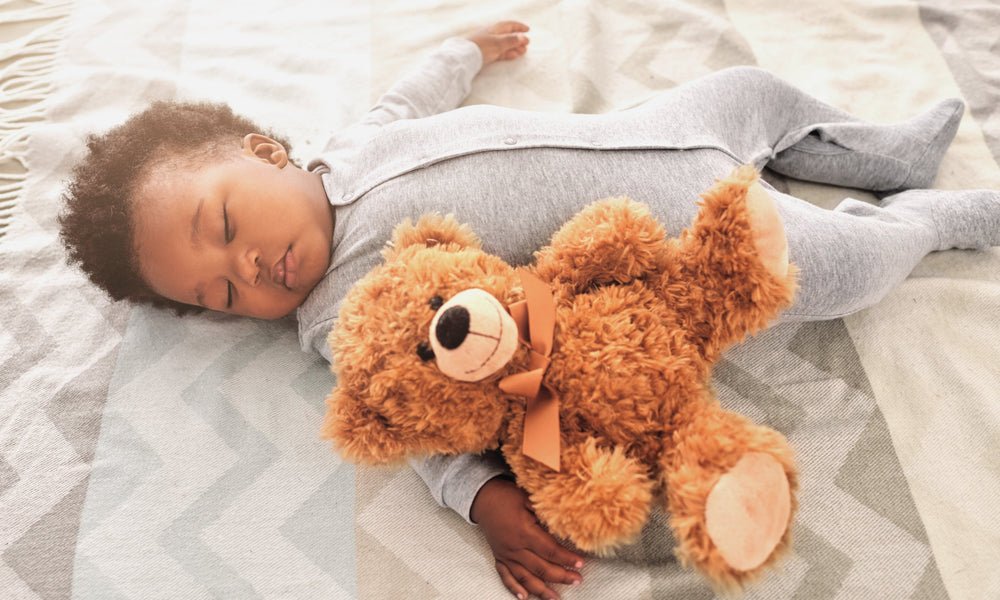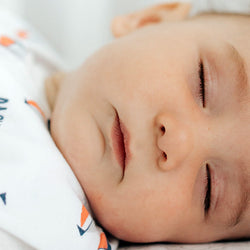What You Need to Know about Children’s Sleepwear
Finding safe pajamas for your baby

by Annie Wiesman
May 23, 2018
Sometimes you hear something and upon further research, you realize you opened a Pandora’s Box for which you were not prepared. The adage “ignorance is bliss” can certainly be true.
My daughter is almost five years old and I was not aware of the flame resistant nature of most children’s sleepwear. Whether that’s due to the fact that most of her clothes have been hand-me-downs, or I just never paid close enough attention, I honestly never knew there were regulations on children’s sleepwear.
But now that I am aware, I hope to increase awareness and help others.
Sleepwear defined
Sleepwear is defined as garments (such as pajamas, night gowns, loungewear and bathrobes) intended for sleeping for children between the ages of 9 months to 14 years old.
Article Continues Below Advertisement
The back-story
The story seems complicated and somewhat hard to follow, but it started when “The Flammable Fabrics Act was passed in 1953 to regulate the manufacture of highly flammable clothing.” Children’s sleepwear was then required to be chemically treated to resist flames.
It was then discovered in the 1970s that those chemicals were probably carcinogens, and they were temporarily banned from children’s sleepwear. Those regulations are still in place, but it’s difficult to get to the bottom of which chemicals (and the health implications) are used to make garments flame resistant.
In 1996, the regulations were amended to say that garments must either:
1.Pass certain flammability tests OR
Article Continues Below Advertisement
2.be “tight-fitting” according to certain dimensions.
What to look for when shopping for pajamas
There are a few things to understand about your children’s pajamas. There are basically three levels of possible chemical exposure.
1. Chemically treated garments “have a chemical flame retardant added to sleepwear. These sleepwear items typically include nylon and acetate fabrics.”
2. When flame retardant is inserted into the fabric fiber (such as polyester), the fabric itself is considered to be flame resistant and doesn’t need an additional chemical treatment. Which basically means the manufacturer can state the garment was not chemically treated. But any synthetic fabric used in children’s sleepwear is going to have some sort of chemical flame retardant.
Article Continues Below Advertisement
3. Tight-fitting pajamas made of natural fibers, such as cotton, typically do not contain fire resistant chemicals. The reason they are considered safe is because they are less likely to brush over an open flame. In addition, because they are tight to the body, a fire would have less oxygen (fire needs oxygen to burn).
One thing to be mindful of when looking for natural fiber sleepwear is a tag that indicates that the garment was made with flame-resistant cotton.
All sleepwear is required to have a tag and permanent label indicating it's either flame-resistant or that the garment is not flame resistant, but should be tight-fitting. Look carefully for these labels and only allow your children to sleep in safe pajamas.
Additionally, be aware that sleepwear that has been washed multiple times may not have their flame resistant properties and may not be tight-fitting. If you receive hand-me-downs or buy second-hand pajamas, make sure they are tight-fitting.
Article Continues Below Advertisement
Now what?
At some point, we have to take what we know and make the best decision we can. We have to trust organizations like the Consumer Product Safety Commission, which has initiated numerous tests by multiple labs to determine if our children’s sleepwear is safe.
We also live in a time when chemicals seem to be the enemy. And no doubt, we are sometimes unknowingly exposed to toxic substances. But we cannot escape chemicals and many are vital like H2O and O.
As I discovered when writing an article about chemicals in Johnson and Johnson baby products, concentration levels matter and the presence of a potentially toxic chemical is not necessarily a bad thing.
Now if that worries you, there is an abundance of natural fiber, tight-fitting pajamas from which to choose. So take this new awareness as you will. Weigh your options and make the best choice for you and your family with confidence.
This article originally appeared on Babywise.life
Annie Wiesman
Annie Wiesman is the co-author of “Education Begins at Birth: A Parent’s Guide to Preparing Infants, Toddlers, and Preschoolers for Kindergarten.” She is a former kindergarten teacher turned stay-at-home mom who enjoys traveling, hiking in the mountains, and creating memories together with her husband and little girl.






